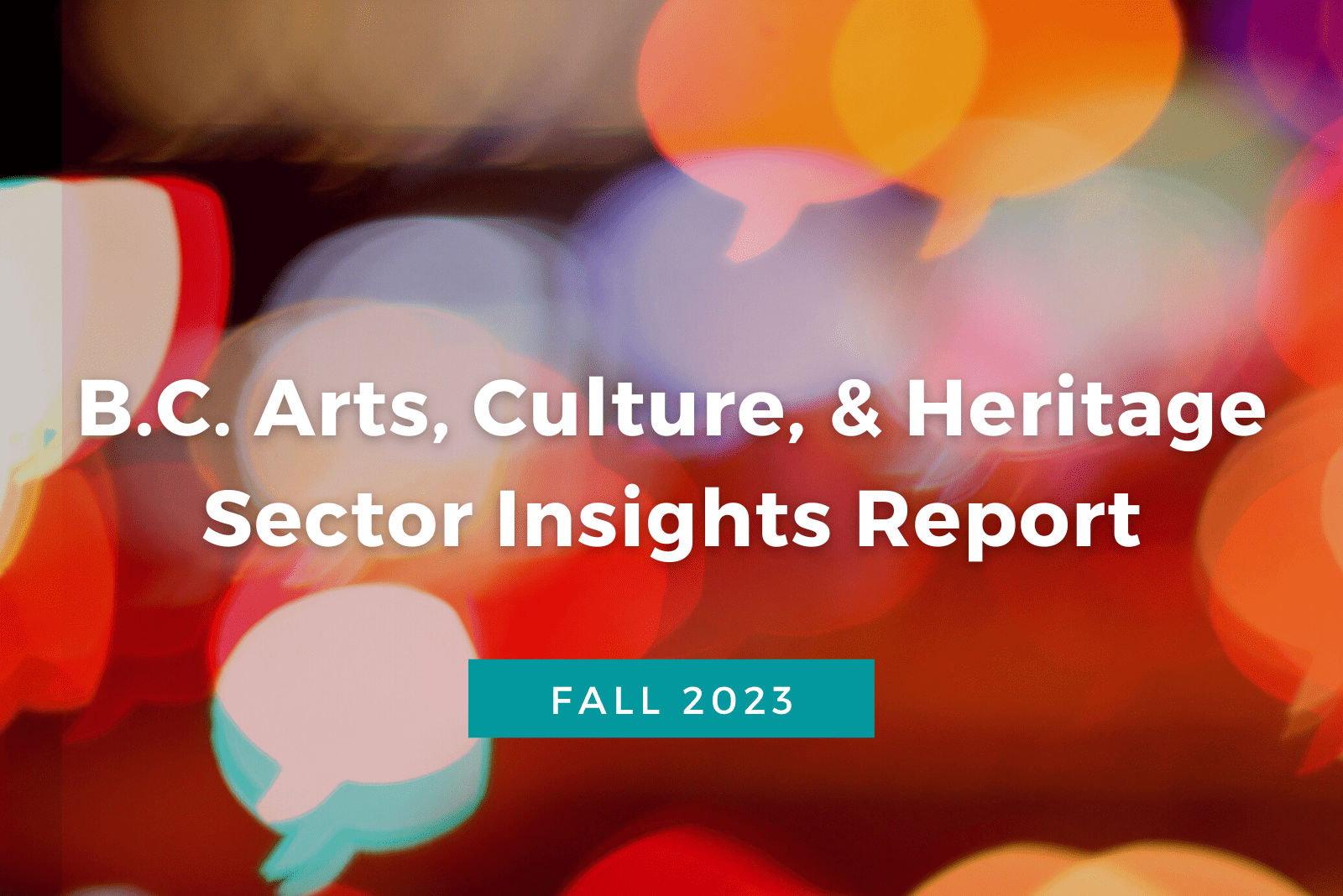B.C. Arts, Culture, & Heritage Sector Insights Report
B.C. Arts, Culture, & Heritage Sector Insights Report
Fall 2023

Report Highlights
- Working in Arts, Culture, and Heritage – Income projections for artists and arts, culture and heritage workers, continued work in the sector, staffing levels, organizational structures and decision-making processes;
- Obstacles – Challenges faced recently and anticipated over the coming months by individuals and organizations;
- Trends – Positive and negative trends seen in organizations' programs and activities, human resources capacity, and ticket sales and attendance, and anticipated changes in 2024;
- Stability – For organizations, stability of venues and spaces, and of finances;
- Housing – Security of housing for individuals, and percentage of income related to housing costs;
- Health and Safety – How concerned people are about their own health and wellness as we move into respiratory illness season, and policies that organizations have (or plan to have) in place;
- Stress and Anxiety – Understanding the current levels of stress and anxiety for individuals and organization representatives;
- Optimism – Understanding how optimistic people are about their organizations' or own artistic practice, and about the arts, culture, and heritage sector's health and sustainability in the year ahead;
- Sector support requests to be shared with Canada Council for the Arts, funders, government, and the arts, culture, and heritage community;
- Reflections on what's recently gone well or what's been positive in 2023.
Read on for more detailed highlights; click the accordion headers below to expand the content.
Accessible version of Highlights and Backgrounder
To download an accessible Word document of the report highlights and backgrounder information, click here, or the button below.
Report Considerations
- The survey was only conducted online and in English.
- Many individuals face challenges that impact their capacity and ability to fill out a survey during the open dates.
- This report includes reflections and experiences of 431 survey respondents, and is not intended to be a representation of every individual and organization who make up the community. This report does not weight the survey data based on population or demographics.
- When comparing demographic or regional differences, the smaller sample size will affect the percentages, but we still felt they were important to include and recognize.
- Most questions within the survey were optional. Data in this report notes the number of responses (“n”) for the question or response option.
- A summary of the narrative responses to open-ended questions were interpreted through the lens of the research lead, Kenji Maeda.
- Only one completed survey per organization or individual was accepted.



